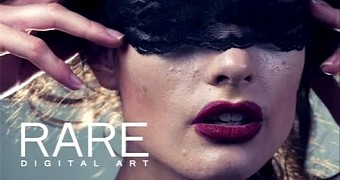We all know that a lot of Photoshop goes into all media, but especially in fashion photographs. Strangely enough, we still aspire to or are supposed to want to aspire to look like the models in them. RARE Digital Art is here to help you open your eyes.
Even though we know fashion photos are retouched, we probably had only a vague idea of how much work goes into turning the initial version of the pic into the one that makes it inside the pages of the magazine you happen to peruse at the hair or nail salon, or in the comfort of your own home.
The answer is: a lot.
Viral videos reopen the debate on the need for a Photoshop disclaimer
For the past couple of days, videos uploaded by RARE Digital Art to YouTube have been getting a lot of attention for showing just how much of the original photo can still be found in the final printed version.
Apparently, not much is left un-retouched: models have their skin “imperfections” such as pimples, more visible pores, blemishes and even freckles removed; their hair gets more volume and perhaps even a different shade; their eyes, hands and lips are “improved,” according to each case; and all their lines, which in their case are just expression lines, are erased.
If you ever wondered how much of the real model can still be seen in the final product, the answer is not much. Retouching in these materials is so heavy that they might as well not even use an actual model: any woman off the street, no matter her age, bone structure or weight could serve the purpose.
Because the videos have gone viral, the discussion on the need for the inclusion of a Photoshop disclaimer with this type of materials is back on the table: people buying the magazines should at least know that they’re looking at something that is not real.
“How could anyone expect to obtain that?”
This is the idea behind the campaign from RARE: people need to be made aware that what they’re seeing is enhanced reality, so that they know better than to compare themselves or other actual people to these deceiving images.
Pressure to always look perfect and be your best in everything, from your hairstyle and fashion to work performances, is enough as it is without adding to it a comparison term that has nothing to do with reality, Elizabeth Moss, founder of the company, tells NBC’s Today in an email.
“I hope that young people understand that what they see in magazines should not be setting a beauty standard for them to try to achieve. Even without retouching, models make up such a minuscule percentage of the world population it’s crazy to compare yourself to them. Then they have makeup, stylists, the best photographers, and people like me spending days to make the beautiful look even more beautiful. How could anyone expect to obtain that?” she says.
For instance, the first video below represents 6 full hours of Photoshop work condensed in just 90 seconds. By comparison, the third one was a walk in the park, requiring “just” 90 minutes of retouching.

 14 DAY TRIAL //
14 DAY TRIAL // 

